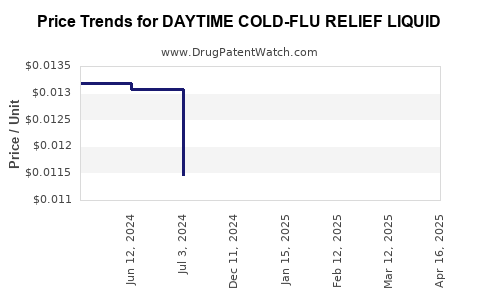Drug Price Trends for DAYTIME COLD-FLU RELIEF LIQUID
✉ Email this page to a colleague

Average Pharmacy Cost for DAYTIME COLD-FLU RELIEF LIQUID
| Drug Name | NDC | Price/Unit ($) | Unit | Date |
|---|---|---|---|---|
| DAYTIME COLD-FLU RELIEF LIQUID | 70000-0191-02 | 0.01146 | ML | 2024-11-20 |
| DAYTIME COLD-FLU RELIEF LIQUID | 70000-0191-01 | 0.01307 | ML | 2024-06-19 |
| DAYTIME COLD-FLU RELIEF LIQUID | 70000-0191-01 | 0.01319 | ML | 2024-05-22 |
| DAYTIME COLD-FLU RELIEF LIQUID | 70000-0191-01 | 0.01310 | ML | 2024-04-17 |
| DAYTIME COLD-FLU RELIEF LIQUID | 70000-0191-01 | 0.01263 | ML | 2024-02-21 |
| >Drug Name | >NDC | >Price/Unit ($) | >Unit | >Date |


